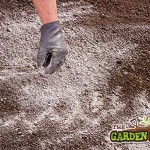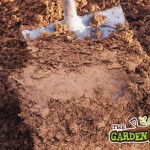For centuries Irish farmers have been adding lime to agricultural land to improve a range of conditions. Lime is a common component of soils in the midlands of Ireland. But along the south and west coasts where acidic soils are more common lime can be lacking and should be added to improve soil conditions
There are a few important pointers to note before adding lime to your soil. Questions such as when, why & how much garden lime should you add need to be answered first
- Lime
- Lime Quarry
- Clay Soils
To determine whether your soil is acidic or not you should first do a soil pH test. This is a simple kit that you can buy to determine your soils condition. Another way to determine the acidity of your soil is to view the plants that are growing in your surroundings. If Heather, Rhododendrons and Camellias grow and flower well then it is a good sign that you have acidic soil
By adding garden lime to your soil you will increase the soil’s pH bringing back into equilibrium. It is at this point the all soil elements including phosphorus, potassium & calcium become free available to plant’s roots. It is also at this point where beneficial bacteria & fungi are most content
Lime is also added to soils to improve soil workability. You can add lime to heavy clay soils to break up clay clods and make soil more friable. To determine whether your soil requires lime for this purpose you can do a soil texture test. If your soil is sticky or silky then it is a sign that it is high in clay and would benefit from an application of lime. When clay clods in your soils are broken up it will improve drainage and workability
Lime is also beneficial as it adds important plant nutrients namely Magnesium and Calcium. These two nutrients are essential for plant growth. In limestone soils they are already abundant but in peaty soils they would be lacking. Adding lime boost green colour in foliage & promotes root growth
Lime can be applied to the soil anytime of the year. But spring and autumn are the best times. Autumn applications give quicker results and this also allows for a longer period of time between application of lime and planting / sowing area
Lime is not very mobile in the soil, i.e. it does not move in water or travel easily through the soil layers. So when applying lime it is important to give an even spread over your soil and if using as a fertiliser to place the lime as close to the plant’s roots as possible
Before applying lime you will need to work out what quantity of the product you will need. There are 3 things to consider here:
- The size of the area to be treated – Simply work out the m 2
- The type of soil you have – Sandy soils react quicker to lime and so less lime in needed the more sandy your soil is
- The acidity of your soil – The more acidic (lower on the pH scale) the more lime per m 2 required
Examples of application rates:
- On a clay soil with a pH of 6 you would apply 8kg /10m2
- On a Sandy soil with pH of 6 you should apply 6kg /10m2
- On a clay soil with pH of 5.2 you should apply 14kg /10m2
- On a Sandy soil with pH of 5.2 you should apply 11kg /10m2


